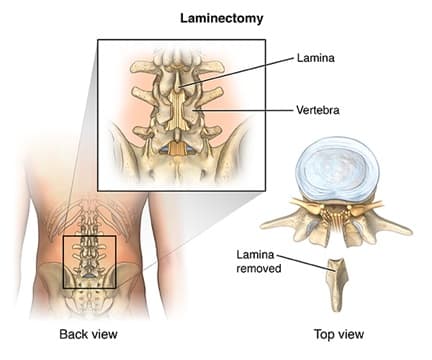The surgeon makes an incision in the neck or back and moves the muscles to the side to access the spine. The lamina, which is the bony arch forming the back part of the vertebra, is carefully removed to expose the underlying ligament. The ligament is then delicately removed to release the underlying spinal nerves or cord. This creates more space for the nerves and spinal cord, relieving the pressure that causes pain, numbness, or weakness. Sometimes, other procedures like a discectomy (removing a herniated disc) or spinal fusion (stabilizing the spine) are performed at the same time.

Laminectomy
A laminectomy is a surgical procedure to relieve pressure on the spinal cord or nerves. It's used to treat spinal stenosis, a condition where the spinal canal narrows and squeezes the nerves. In this procedure, the bony arch of the spine (lamina-) is removed (-ectomy) to relieve the compression. Most commonly the pressure develops in the neck (cervical spine) or the low back (lumbar spine).